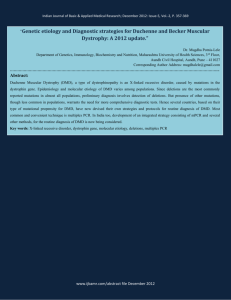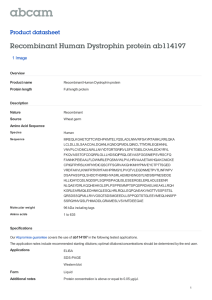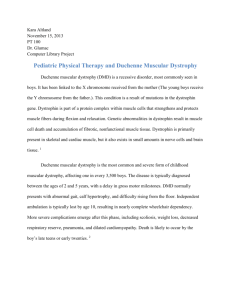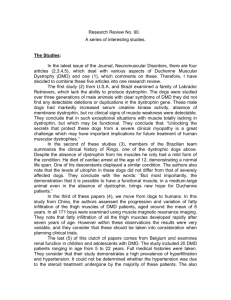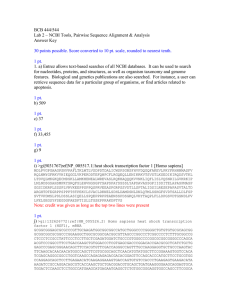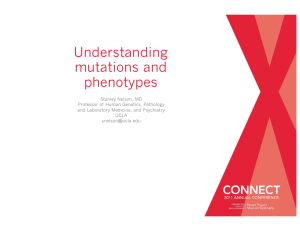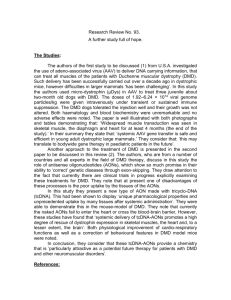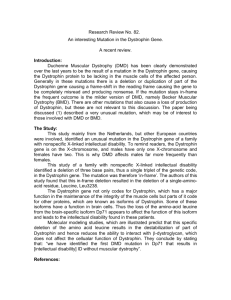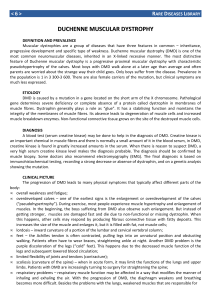DMD Reviews 90.1 - Action Duchenne
advertisement
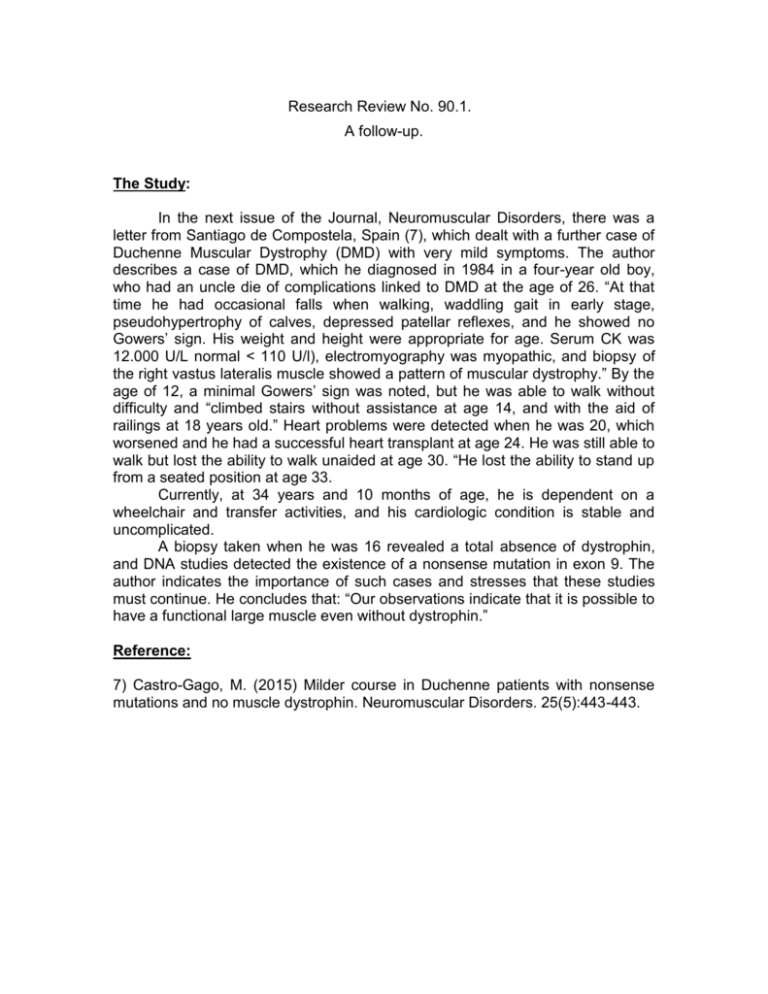
Research Review No. 90.1. A follow-up. The Study: In the next issue of the Journal, Neuromuscular Disorders, there was a letter from Santiago de Compostela, Spain (7), which dealt with a further case of Duchenne Muscular Dystrophy (DMD) with very mild symptoms. The author describes a case of DMD, which he diagnosed in 1984 in a four-year old boy, who had an uncle die of complications linked to DMD at the age of 26. “At that time he had occasional falls when walking, waddling gait in early stage, pseudohypertrophy of calves, depressed patellar reflexes, and he showed no Gowers’ sign. His weight and height were appropriate for age. Serum CK was 12.000 U/L normal < 110 U/l), electromyography was myopathic, and biopsy of the right vastus lateralis muscle showed a pattern of muscular dystrophy.” By the age of 12, a minimal Gowers’ sign was noted, but he was able to walk without difficulty and “climbed stairs without assistance at age 14, and with the aid of railings at 18 years old.” Heart problems were detected when he was 20, which worsened and he had a successful heart transplant at age 24. He was still able to walk but lost the ability to walk unaided at age 30. “He lost the ability to stand up from a seated position at age 33. Currently, at 34 years and 10 months of age, he is dependent on a wheelchair and transfer activities, and his cardiologic condition is stable and uncomplicated. A biopsy taken when he was 16 revealed a total absence of dystrophin, and DNA studies detected the existence of a nonsense mutation in exon 9. The author indicates the importance of such cases and stresses that these studies must continue. He concludes that: “Our observations indicate that it is possible to have a functional large muscle even without dystrophin.” Reference: 7) Castro-Gago, M. (2015) Milder course in Duchenne patients with nonsense mutations and no muscle dystrophin. Neuromuscular Disorders. 25(5):443-443.
